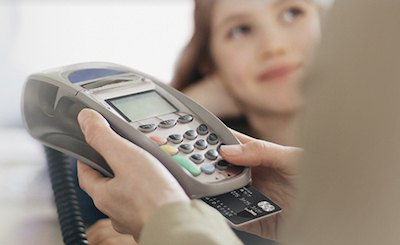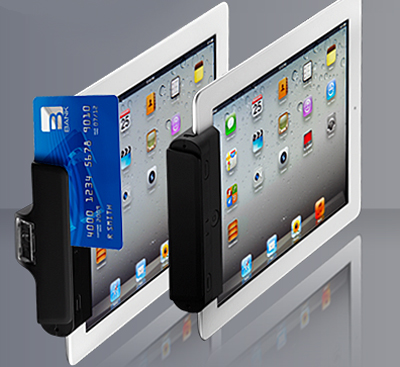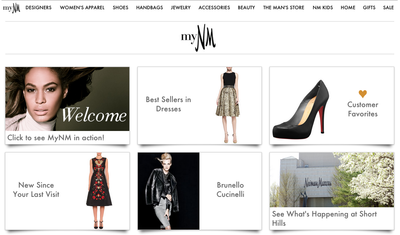More than 63 percent of retailers list payment security within their top three priorities for 2015, according to a new report by Boston Retail Partners.
While most retailers have been breached at least once, largely publicized data losses within the past year have brought to light the need for further security procedures. Establishing revamped systems can help prevent hackers from accessing client information and help retailers retain consumers’ trust.
“To breach is to die. It is a brand killer and CEOs will lose their jobs,” said Ken Morris, principal at Boston Retail Partners, Boston. “Retailers are taking this risk seriously, as the negative impact of a data breach can be massive in terms of financial costs and, more importantly, the damaging affects on consumer perceptions and loyalty.
"Simply meeting PCI compliance standards is no longer sufficient to protect customer data," he said. "Hackers have become increasingly sophisticated, requiring retailers to re-analyze and revamp their current security protocols to adequately protect their customers and their brand.
"Retailers recognize the severity of this real risk and are making it a top priority for 2015."
For its 16th annual POS/Customer Engagement Benchmarking Survey, Boston Retail Partners sent surveys to more than 500 leading North American retailers. The majority of respondents represent specialty retail, and 58 percent of respondents have annual sales of $1 billion or more.
Play it safe
Neiman Marcus had to work to fix security flaws that made a December 2013 credit breach possible, but the extent of collateral damage done to its reputation was measured in the following months.
Although the less than 1 million credit cards compromised at Neiman’s seemed minimal compared to the potentially 110 million affected at Target, consumers were understandably rattled and even outraged. If consumers feel that their credit identity is at risk with every swipe at a major retailer, the damage could take years to mitigate (see story).
Of the retailers surveyed, most felt either somewhat or completely confident in their data security. However, hackers have become more sophisticated, calling for revised methods that go beyond PCI Security Council standards.
According to the report, there will be a 650 percent increase in Europay, MasterCard and Visa (EMV) this year. EMV calls for point of sale devices with chip reading technology, allowing for further authentication of credit cards. This limits charges with illegally reproduced cards.

MasterCard with chip
A deadline of October 2015 has been set for retailers to upgrade to EMV standards, after which stores will be held responsible for fraudulent charges, rather than banks.
Encryption is also rising, with 45 percent expecting to add capabilities by October 2015. Boston Retail Partners suggests having the encryption key stored within the bank rather than in the retailer’s system for added security.
About a third of respondents use tokenization, which turns credit card data into a token, with the credit card number and other information unable to be gleaned.

Apple Pay
Mobile payments using Near Field Communication (NFC) present a risk, but many technology providers are working to make transactions more secure. For instance, Apple Pay provides retailers with unique device-specific tokens.
NFC is still in infancy, with only 10 percent of those surveyed with enabled terminals, but 35 percent anticipate supporting NFC payments by October. Bloomingdale's allows for Apple Pay in-store.
Most retailers still use traditional POS systems, and augment with mobile POS. Mobile implementation is growing, but at a rate slower than expected.

Barneys New York mobile POS
Beyond omnichannel
Technology has also made consumers more demanding of retailers, since they expect to be able to access inventory information, product listings and account information where they want, when they want.
Due to these increasing demands for “real-time retail,” it also landed in the top three of survey respondents’ priorities.
Real-time retail calls for a centralized POS system, compiling information within a data center or the cloud. This allows retailers to access and disseminate data faster, as well as speeding access to Web sites for both the brand and customers.
Centralizing data can help retailers achieve unified commerce, which goes a step beyond connecting siloed channels in an omnichannel environment. Unified commerce recognizes that consumers are multichannel shoppers, and connects the dots between channels to provide a smooth purchase path.
"Boston Retail Partners defines real-time retail as delivering a seamless experience to consumers, whenever, wherever, or however they choose by gathering, analyzing and disseminating customer, product, pricing and inventory data across all channels all in real-time," Mr. Morris said.
“The key enabler for real-time retail is a unified commerce strategy that eliminates individual channel silos of systems and data,” he said. “A key tenet of unified commerce is leveraging a single, centralized commerce platform which acts like a ‘glass pipeline’ combining point of sale, mobile, Web and clienteling to deliver a single shopping cart and seamless customer experience.
"This platform is supported by middleware and a robust,redundant network. This centralized platform is key to enabling real-time retail that can support instantaneous transactions and real-time access to CRM, inventory and product information across the enterprise.”
For instance, if a shopper was browsing a retailer’s Web site, when she visits a physical store and opts-in, a store associate should be able to look up her abandoned cart and help her locate and purchase the item in-store.

Neiman Marcus' MyNM profile page
A piece of the single commerce structure is order management solutions, which collect all orders into one customer profile, so retailers can access their wish lists and purchase behavior regardless of channel.
Implementation of OMS systems is expected to increase by 250 percent over the next three years.
Improving customer service is one of the key challenges for retailers this year, but implementing technology can help better serve shoppers.
Part of this is being able to identify who a consumer is when they are in-store. A growing percentage of retailers can achieve this, but it often happens at the checkout, where sales associates cannot make as much of an impact on purchase decisions.
Increasingly, retailers are sharing customer information with associates, so they can better personalize the in-store experience. With this data, they can give rewards based on past shopping history or suggest items that match what the consumers is likely looking for.

Dior sales associate
Virtual closets, currently being used by 3 percent of respondents, are another way for associates to better serve customers, since they can more easily visualize pairings with existing pieces in a client’s wardrobe.
For instance, Rent the Runway's showroom in Henri Bendel’s New York flagship store provides consumers with a guided and efficient way to find the right outfit.
Personal stylists, or Go-To Girls, will be able to view the style profile created by a customer online prior to appointments to learn about their client. The stylists will provide one-on-one consultation while customers try on dresses and search for an outfit.
Each fitting room contains a scanner and iPad so that stylists can upload dresses to a customer’s “virtual closet.” Notes can be added to each dress in the virtual closet and the closet can be viewed at any time (see story).
Personalization can also carry over to the receipt, which 70 percent of retailers plan to implement in the next three years.
Enabling unified commerce in-store, retailers may want to think about upgrading their existing wireless networks and POS devices, which may at this point be out of date.
"With an omnichannel approach, retailers are integrating channels and the customer experience, but from a standpoint of still operating in separate silos and utilizing disparate technologies across channels," Mr. Morris said. "Unified commerce eliminates individual channel silos and offers a holistic customer experience across all customer touch points, and solves the omnichannel integration challenges by leveraging a single platform.
“The benefit of unified commerce is a single version of the truth that is assessable across all channels and enterprise-wide in real-time," he said. "It is the only way to truly deliver the real-time, seamless shopping experience consumers want."
Final Take
Sarah Jones, editorial assistant on Luxury Daily, New York
{"ct":"XmwHCtVHhO0IAO+v3MG3rRC2YUsUY4wTMS280fWok2KZsQUtHLnPs4zlu3vmY0GQ6+AyxK0GQXcf4wipgKGvy94qscCARvjFN6pf7OYZyQoUYZ5+eM7pf7+jvQY5wBrCpepHy2ycEM7uzvKo4VpR76bVSjnemMLIRVOW4lI8vZancml8e1f+59cGtqyZnxfHPRvgl8m1+gfJjimCB9aMe87Q3931bjGI\/06DUrSrzycF+mjqxLxYt86Dj2DCKASVY7AV7RMSwrMxdhPAqFHz5YL8mKFhCs8TC1H1tHv8Bfwe47Xt\/VIt\/jqcoQ4YW3BgrTMs19xEbY61XLqEjuztHHT8FGo4nRAomxt\/gkfuxGPLpzLrQ9ALwievcTVn4abBC36+4qwZeRu139UMie57YO+\/OFiIadhWNYBPCwogWOXRcBV3OSXVSSuVfvGMqKnjkIdQKut3eUwninS+Km7R7Kx6q4SYlMEfJZLQBWq4TMxDK3in+4jJbZKNRv35j53iAfATIRU000Yz8qxCIAzSRJqfbTaI8pFXa5xh5T245n9UiA+Hu2qTRhaV89AkqlzyZ4OL1QHdGwPRTcpI6XSY0KVMhEyq7jGHFhY4WAlaLsnf6Mt1+iEv9Px5H51JqmbaoOH6c2MDKU\/fgBQUSptOD6ub7OlerU7kbcVMa4UABS8iaNkqriCuZU\/wyzBP9uDS0\/UfL48vvDo0zEKEMqAvd7bGbmFQMvMVISMAz9luqzizTYgEf6c16jC9cMhWAbudFVua7D6TUo86v2kOIXKuk7\/1NKEYaOp0xjOrFMDerAaDuHI9RNjXM6BZ0gk1BO0Z6hyLw8OZTC\/8918f8M5oRUr1tj7KgnEngNk8ev8jfVgmM6m+\/LnYZCN2t2j6EuwTmNR3x3NGbv1EMpnp7KAveKbJWGgSNoKruJYSvHWoEv8uniHUZpoxvSSWubzDjFMCV4s6TZRMeIotfkIPgeip4+pCcaeEM\/IKuVT5rm55AjJ5JYVmKfyoxjNLG7phfKeiViMrEVL6TV\/wec04kcHEWZmaStlefgdzPEwZmMfNlSPoiyit\/USiFIVqyqXMDpVZfop+bqsEaEe8jeW2MA54faXBjdsOrvzeDqf8i9cDyMteWvwZWdUco0vqXXyJ5\/ClVorvXsEHCvcE+kng9Phkc7m4R8zpLmE923H7xHjjh3\/2p8scbrof7cf3yCTbsbNAGVQkUge68YEB57NVm1xQs1WPUxfqwrPCB4AYxYQG0vSNRBhJuBjCJuOHcabzkGFDX1z2zJBbZ5xwUzC5j54Y2F5QuGAJk6J2T9YCFTrmnGJLEUNSjDBkmZG+A\/Cot+3RUV3nIxSiaiwwwbWASR3XWG6hW7lxFJw1uRdngiwWRXrYlq6dlF5j2Zbk9QYGE7NKlHCnv4fxIai8CnKME2kVgL69vrgHpXsbO+EyLu6UWCVLUtzQqYIYtTzYve7uLzJFp5VldKOVq+ucHOZtRb0QbS5Ew3567P7jCt5SAq6rNQTaE5+ahvVV4NNaloMsMSjnkUYNm0z\/ytUrLDVKlxWUJE6\/KqID2mMjRV83JjxT3ircQIEFckUJcawWl+Z+ozNALS\/q\/f1ALIErNTjKJavDj3Qmu1PaI\/WS8oCpwgeTwoeBVuyg+fOCXomaUSuqw8rDcJ5pkJ9UtZgPiSe9VGeC3HeoaFcpRgv8u75SnoYflsvt0LHmAKYR4IXiSyS+Xdm4\/oJ8RuaMkGi30Qk5u9JH4SVomg4r0dlJamN8KxVxE3qohFSCPnvHq96Ca40+FW7mzbW76Jkxx8y78cwbmLIUGAO6VfmwH9GJAmmUrlS2ZIb2be\/tsDTlmi563vghSs9Ve8oa9Kb3qzF2iyZO0SquhsMmgPSN6zXNouMZnOBK6i0QaqsV0RgeVPQDGO6WI10jIVEMEQe1HCeyco\/UfsUf1EpfXDuXwQTAPmofn5ux2VEEYtDgf\/mt07nfLicZzIg6fhiGJY8\/9z9GG3NbGlEHd6R4K5qpOgcDzsfPD\/bSVjuhbeqanoDOte19Z\/+NiNAGV7bBVnEhc+ZD8jZhXc7BFDEpkVZ\/ndwHQR5qZ6XRq8ARDx1vGVYNWpV7AJax5j2p\/QPloIbrz7hGu5Kbo0yLQ9Cvg3WIglNpM0rKOaWYFne9vGgoUGz06fKpT9\/qSFe4dZJyPbSO\/1VwZHywHusFQTiwQBDO4lXIDwSp8liEBu0KOK69NRvgodiPYGkYG8b465Jj377zCc35H8\/P0MzPkEkgElIgXioxHPMHOuOdiKAH29UndIxHE+7JiA9LHNb4rIVNqXYA+MTSqsK0KyBmQCF3lzimyukTBsnZKw0+ICcoLEx2zIonfVjtTKuvb0MUwr95\/JGP+WL9Gd1fJHooGqnE4EPVNsWM8Y1W0WQt1nqbIq4CBay8x4XwmnOq3Dknpl8r7PkHKZQ2q2rM7svi+UDGluw+3qILWGEPIlkw8Agd7gQC9lLgkyO8YSw0hU+AvTWgrfyUcpuxzJ7DQqGenGjJrSiZmAchthZNyHM02ghFUbrE7QMjnauOmThBKG0xP33ORcAr7VX5r+ocJbrVJINVhwLT+wod7jsOvi\/h8QhOMrgmsutfl0LREtfqDbY++laEjhisp2VXvadZl5R6PL4GgumNGTd41uD48twELV0TD70eFwFv3VsIX2Z5XvekTZZwLH5snOaNWz0zNM0zTQpIrJPZlTQ6hqU3ywpK0eomuOloljRgBkVPha4wQbZ0ZmtQh7VcdSf44TuKnwIy6YrxfzUP5nX0iXIvzJhAjw7pCLVzY5PL4FUs2p8n+0k+aIy4vCD9\/DZlZ9gWtfx6QxsqiYg37rUNQGdy8pmlqIw6NQ9YaE1+PoCUn9IJ2kETkq5CYfKltByEWKkWwLb1xDaqbq4mZKPEOWig2zYYEyK3lDP2kpRwVrP9hpFuxxoVabRS1Qr1M6kZ\/vPUfjUVzeb0keDc3sx1c1QTm0fdyXxiNBJIOpESeSdlaPnmxDMFp+mO95XRBUsgkeKofyIXqZFlCabrTEa9SjBk+c2MGxgHViWjhQsqbFmr3ucl8Pr54le4VuISBbSVF5anv\/ahzEUBHpErT0ZxsrZtAHz6u1m5q4B6YvZmIIEhgtNh7Gg742\/50CDq97z8NYfIqibH3rIwQ6O7DYFKWFWrbnmTG\/40ZvMb7BNL8nuBOfF8gmtZgm599DJhRAh9rHNApU\/BYEwKjMZqt5820YSY\/w0IDwm9yocqAfyBYmyjRuoor5n4Pf3SnUmGQ1rgDTdeIdvYfiZ6m7s9\/cxR4G7FUPkiBKezNUiZOwAVoBgr7GRJHd4uchQcRblIu10HAGlxbnO0aqvjc\/7eJOAXWJZtFL0Bcucqv\/+9TJ9GSuNr+eMvOJdRKhAI2BiLKhWe\/QeFklAEVmmWXWgGa8Z97LqpVQdGYOploBmi13sOAUSMhkaJ1Kvh0YMazAFl2r\/xu4se\/TCk3ULZjfW5OKhoACnOzJSuLHUZttanEdPVSEVs4PrOR+75Vt7MUE9dZjgYC6hQCR2pv0CNSVLn3hE\/4XFk26dUQXFH4VZBtGC9X6CDYKk+lqQBsXBSzUMyoVrVzY8RvQN36sUeJWQCzQThOe5fZT4bzFnKskl4gxefEX18BhMJLlUL39fD37GL3QfhPFsGVX89QZajM1dumpDTOxpaI+4UiZMZB7a8\/wk9dcsuT\/UFjXcQZaQ91+QK6KMhCIgV2SThUyMCeOeqkrajE1rzMDBRmswFLnMlY2dAZrJwTTtuzBzrSLlLFiTsgg1MJX1DmUAK87rFhjJF31xGhfyEripP7e3hGfR5QCtkPskQwE9gxgTFUlVwLjAKE4zLIjrJb9fwmsKfxWQ6vXVtWsbIhpHl4RrFsu2AWKeJCaIOvO+3JINUxM7d8ddIOzYAiulgh1qgRoXkmShEYlYyUGbB5FVbJUX5QERJJxGHH5eEpD61tLcVBFHnYDE9Af8DEJpklGx5\/PnIdvA44ieiTpBaMoxLdFMy89Q3gkxz7PF5CrTks4bYWeZG7+yClHUh8IxLnsnxE6ksJvg9j2ubsbUj2jHQ5iK3SXhQ88Cx8IBet\/mmly+9p\/vD+Wrr5ddsctCQP+b\/IWsu7C\/q3TQjkB\/nZ5pxxXdLs3SKDUBqfrxiPQFdf7+y0xjyEW6+KIBiQF80nf9aXvN+Pb3iSHdhdCWRBx+VYKN5+j6\/zMRX+pf4jZ1s0Cccvkw+NkFrmtC2sC\/VL0XQiBg0hTH0Zl4gqeU+dcCEgYvVQT7CelRPBpN3if5Ub56gDu7J1zFiapOYs9oJzIM\/DDjh\/1hrcc86SDm6qWcjjqyw14fhpmcMaj+t2udEdbzP0rsqvMICcgTnfEH4U9+bkRGDNVg6HzwuzQVorLaAN6Da6w9TUqq2cXiNElMdji+GOw\/AoIC4mCv2K3oxl+DV\/7Wf85iBzs\/jUolEkuBmPUVciqD98O+oM+nb0Vfn9Ao5MynjpnSIABj1lFsiYxbpHHktFJVsrUJYFXorHqPnvamE6T7WQSHdw2y3gPTxHi3zYS8C0W4rG3nhEciyn6NHGIMnwrtcSYYPSX0vCaVBKem5LwzeXTWbBobrPFl7QBs5rbDW6844L6QekarO2mumTveU8VriyFMPWFKX97Fu0lxBUfB8MWHATH6KEPDjhNI5AkySCZnTsLy\/1vp2I5neGOdIkwtN3hxxxas8di7qX2H1lffk515BeoDp2PsxPVyQX4ronPYSCQ2bAg7BKLtPeh4874baZMrXGH8mVigMFcNAUXIn71XOQc28sSwUcptb5cTAyOcD3JDgZOEspWcc1EGjEJVlx9sj3icoRq7RjW\/tbtlq6C65oFYducR1qhzesHc7DCDusJW\/NSq8nYvbiqlpDhI7wUh4yDF2yRUgLbqlMfHXN3XUbyHZi55Rc1wuL9Lhl1PZgihjr8oFV\/SlEnk0QV3QwJN3qD9ZpV6SEWK2oqA5uQUXVBJWUl+RuQ\/EdD0KFsdzfhd0tUI+y2hK7UZO\/jEWTJx5xLRK\/xs56wmiVVBdPmhMIbWvmwNf8k9zGtlT6sjNADOzIF6LS4EJfvepvHejR+e\/CQSXRsTncrz20WSPwRH3qGTnMmbbvYCWgAfxeNvU4N4CwBC+MQDeyzFj+ULNwZ0rV80fWlrI0f3h0bL4dADTIBcy8NWy6t5TW5tl9cTlZ4Yov+iilnAkKkWNqjkBmcXFmspUvK5dO\/S2mcqZjr3eBZgUNE\/Mw4Hk4wJucfP9Z4TC4agWb6uz2Z0MTbwIZXe\/Ynkhb7QuFX95WiPXpBFnHQZL4AbrsntFmzpZd4T5B15lnuOnmPTCmtpoVJ\/8m7KDoWkD4kuWNcJRDhFXur0VSxlDP1fC0VbHzmw3Y\/mpcQAhCqfLnO7MWKo18iiYt2sDVmCZLNXYZ3aMQTE7G\/b5MztjFU0nWeF16Qq+5sZSxZZC0WPbhJlbznZ6sK9r5bC7MfVlwNpfB6Af746edJZFErUCJQDdk0FdxTJjeJyrLhAxR8rCCmaK8xxgLYHQXObcD8f15ghhPnI27KZnqfZ0+z9942pNzX9AbBEpEZietDq7hU7MsGuJWWSbPe52wvwNbYTJcNs9irTe0\/H6O5HmqCxAZCIHEDhgyjBOQD9NoG1nehhuHSeUZ7pFkY+wbPmG6v1\/ATl0b+YAWowspnGWLdabpsb69eaDv2mQCXxSy3clamaWYMNXEJY9WXfhoTZtqBiEJFxotpbA1Yp4tQch+RPJSL3A3MmeAVPl2pSi6SdOri3tabPSadPqaNVjYpSZeIqsFqZWjvtZB5Fn6I\/Ngy\/LbV40drpO7XdLOh+FG3huw\/7X9i\/9TsMMS7IL35\/i1vwKD+hQflSDZng7\/YTvUFQqiwodNnfOBn145v9rQgWLbLPKPTy77UPz7yvFWRclNGDEz74H1jmaVglL7dJEgeBa64vq5E224UpHoaRO5FESrbvBmVfHLR1nxzgl2ege5\/oTneydV\/nYXIvzHQFaGm\/+c3jKRGq896QaD62oFrI2MkPbY0yo5ZG8wTS2LZzXuHNuIvoRnNXPqq\/wGEAPEiVdMGv9r5fvdbSrI1YVLJDJctywC37ysuN8q2\/L884jNLsZ1SM6WwxRTfeHkWTtRNsBjwFjD3nmbbfGMKghzdJgwtbzqO1p7A8gbEgG\/CCKDt5E+V\/JDYknlQizd\/2Db8kBNyrTTX2G\/3hDCt7q0RnnG2jEZSdEfxAMLDlxZly6N1gbFehAVHuKPhXAGLrg95GyxVHqCZY5RA4T0jhVlbO\/NNPjFaFeNAVJE3CJwPF1NRbbgaKlSHbAIjQ3hy0G+UWRgOFJJoBouN+SXllAT90CxYGf\/RjF+dR+HSk+0bOreSLCKM4OiU07EwHZJDWWQk1hCkA4Xq4yjmJMO7EjCQXud4GwP0+kY2vimQ7g\/0p4DYThhWF+9OVQQH3JoKR8bV+BHb3MLI+uQlSTs\/s3vtxunFtAt2yfM4evxTL7NKzem9JS5i1X4ORusm+lxHRAnfuwc4gJHQ0UElrVK0NZt8dq4IY2KUXszUS\/\/efd9eoFG2QGmY20KwiS19u2roKOmV\/aRRvLynGDp7sRZvdXKGrKIGtABHL8LK6yDG45RgYWQfYCri6nUVp62e8VtQiQ8\/XF+AoG4dUkJGzZqMU5\/JeZl9l1O5bb2pym+LnlwFJVbhZTDfQBmSj4j2Qlp0RCVy\/4XUTQhCYM8Nf2A2uBUlo\/tNYOSY2C\/popGATPzowE87Wmc+lFrAjCfyUfb7hG8sEqkSY3teHyptRe9NnIrD67hU9PadFATTOteIvOiWFo7f27hNtslGMcWwMy5ECa\/Dg+hwFjcHP0+4Ii4Xtu5DNtpgzSwoC8oKnwwpbY2L814T1Iy8L235Gh87Mc8PwFEZPwwd86KXxpFPsTjU2S3BuucnUCVV7HHDa9xy2UxD6jFhttAXO7NBUsZDaAg4vYu+3qZgB82EZE1Y9zJRPYr0XLJvXXni9kazvGHz3cobs6tHRp2HV2pjTqavy9LVTFJJzUQEvgdh6AAwxBMZugPTzGEAuJOKFNsANkyFAufHunYfijJihSqb9g7NQ\/MmqYaFQFnnMgoaaGg8arWvBJBXfYYBtBYs3zeoR6EDknZUWoEII+kOglmUMgCnjWqifZyFOUNZF\/R\/u+dhIuZ2MwrZI5Rff3qectC0GXG9AQ5AZgjbCQoTewyAza4LeTGfiXYdtaX4nQEdi++h8pNL1n994fZu7gEPnSlKYSI1rNVBEWAxjSwo3\/f6fb\/BO9YtCTwgyvYI\/i261dndTVlAenGvFxg7zKlP\/gIGMhSUBFn1PZ3DUAEAmhl13fEjsuiOEeLlqUEj8mLJvbuErVfeGZLQp7e4OtkTksqbfh60HngmvDWOETeaTpKsLoRZgIgehKFlh1WW8MXuFbSr83rycf+G3BRFUVAGKmowCzDSwolgVkU26VldqjAtCxk\/tdKZy5Hu8WllZpoMHn4BQgoTrCeY3X0Jropo\/T43mHwbHeeXMYYGnelTnZ5ruIKvYrC3aqtxqyo0YSn1\/T9jmbHYpQSOiKGUX7kqHqOfUP8Bvk389UQoFTvvlgDfN\/jL0XU0P4Jn2GUDhVIZ8Q7UqxZU844u1uIIKvri4PVzLUwoZf70oKqE8\/2yCDDqs9OA2hskhoVg1etH+K0Zi0na2byb1KupjbC4tunySMvQ4QPER1ir0\/iQwpQMROURWd8MvzJq\/Os59v28qXMVGsY1zFU3DmSmyViuNNZB1pfYsUAGdt4XfV50UagQiRYcmUtpGQx6n7VUOBC7ihPD+UHPbDAdpVohopyl4U7nm7Zh6NfMvPwf5h2wEZDg0fZWhPv\/uyhYNBsT86NO7VYGuqzESrxKM+jLWPmNiLj2A8rfT3Q8oCvE5eIWl5ysaE61T9r+uPve3YG+BzuwXcPpPzNJA4lbN5AkFvvUcFSVGyObZ9qavF198tHwcFNNpLAAs5\/vXFhGlyS+Le7n06430fS1jlyfOiPRN7WjchfDao2Em5xUexzUXbl\/3q0HBrjVyQp1eVohSv8AET1DTVJTOCr9wKqaLLNtMZBrOBi67OHUIupzhCUtz6KRsoSyuouIZhDEoV5mb+rmgGRZnGXUDYtpIbj9FtcVHlLYBbumrLB7C1BF5C9fEL2sJPT8T9mASf9NjEK+FWCf50meniG475c7K4fzbDZpNunE7IkEfKHTyVsSO160HvJTWLUHdSPzrj\/MQY2uA8TSc22IotbifjDJMtl+rUR7zh+NxYxcntSega3knTDEH01GsubzrUzHs7YlM2d\/tglTuge5HKw+nIMkL3W8XNvOzq0XCNC+xFtdZLyRtwSAZh+Uv5roCcFJvfonf1Odea4hLAyKmmoI251DKlMw\/B48GMrlqfLfp9SjrYpLXkpAtkl2pDGmVa3lWi\/C3RsUQXcNA098Uyktkj6iVQdQeFVv6y+TQVjf9TJLoUjZTG+qqJ0+PVKbEusZfXeIQkVFDsIlBZuRwWtLW4dsJcyNL4HUjchkg9TGtsPkpVEyHeOy9SpdlIb4AwrvfVPxF+GhDvESX97B1nM\/CE6gaFhxgmgb2o4P\/eoQjHG\/9ubOpmXwGjus51i1NzNzEGxA1I+OG6EIC1jgzddcQQxarTPLZITQDMzwbXD4QsaoOW3hBSsc6COpoRCE3bZaCqdwyGo9wo1L20\/\/7gVbnF0dsMBOj61LC8N0eAwvLfjlEoXOWL12eRj6mjMwXysNWQBVUbU9AzCauFHQPCmvmW14o3esZhYgvt1bsdP+DCXfoZ7mUTGuevv0lT0swORNRtB\/6qsjzB7o1SjWFaHy1SHR7SYVr2l5wBI2vbvX+7csWXvasezNp0UgexjaSlP1WrHchdBIwZIJpscfFdFeAXac7M4r2C1mmifIml5X6k0Sf2jRU\/ylIJhgnS6yoII7\/Rwp+WsGjbanpfZg1lEiy8CFsc77L6O7lqo1t+0Uy4HQ011iwrYZ19roUIpbhv13eXyQY7wacRIwypKQUooNh4Kf+0TmLkRb8fVSUhmdYW\/Algfs\/qv8JRKQQDg1RWlONfxYifuROgNuaE949l025C2R31pLVKhl94m6AIx3GFzsojEMwkXbHxz\/qsJJxqAOV4ol5+oOAaQ1ZRLeJFEeyOeuvrE3iyr4v\/2QYbhiEfK7bqw8C60zX9pFDzMo7xPQreU0iuJ4cPhC9E5rs8VgrgWT7AqddWt63a3V6vdL9ISq5y5RZEriBw0gEbbzFBDzSTIBnLtUcuSexhNwQi6uXqiqfWfG+WnUy4fLUDyAfBIxcSpMj2nD8V7ExTnhOF4oSw6mQZpeE5Jr4mCjnf7U3uaYGu1y8Er+8igNNba9r1UiPVYee2qSYi25MSofhMU9qhP2ihNOMw14T9rAKqo8MZUgtK+IVcD4f9Gpnbe9da5lC+rCCswWOdsSN86j0dtftEoHDQQ+bq87BcZd80kfAs9UepnEJGM7xfLE4z3OfGcSN+5qYgEtJqwgEi8bKwvqmRtp8ooQDUqrhpz3q\/iJMQaHn619Twp2poX8jcdj7L2eRiAshdNFiKopCJyBdUt6P6wrsVR3LMbp7Ss6jh6\/424H86DOojO4aBa8gkcf1P62L9fNOgniwdrXUYNSmJndT2U5kKfl+8CZEHHgINisNNjA8dKgxfbXThaKldZsSOicX\/J\/ei2bAMVCG1HDFpncp4tyMKi2obchQulQevwtEffH5c8Qrfn9aa2+LKAcvzFjq4wRQd\/2O9Q5ekQr7d4VRjgy\/ojg2gOHeUX8Hl2\/06NKSIB7x+0OU9AvxU7p0lF9esI+04rl4PCQ1ag0whQzGthwgS2jfCRto\/XVQR9xASTp4ReQMOfnnZR9yI1wuhQTF6I8uE9eupXNO1Rmdyvk8a0trHciO1ikqj+LRJTaURu2BoHRqnz7OoU53LcrCr\/9rQOaeFh3xz7ZtrRf0O5ZjGMo4esa0g6h5nN6yEfhe0HaPgT04jp19lG89JUmUQZacYXK4\/LU9N5tR3wctVK5kUG+1Lde7JZlYIbazxhaeIb6FxkD4+bf1JG3q6S4gjiFZcPW+xoMkCW9RszJNybqoPWECmB\/iFBE0wqjQ82m\/umlvITPX14GSgOp+cos1+5ByZcTTO+JFpgAPdMbUwYNjHJ+9W7\/qnkaQhenBFdbYZAm\/z5dqcKN1nE6zqAQkVDofSYOb60afSUH29q\/GF8UgZQQZ7yJvQf7SzYdeJ6Y5gpnjO2DGSfep\/Xu15KfYUSsuUlCVcSuHFS\/C6cb+7uloN\/zA7uW9ThVs6aA+9h0dwbHgPSrOCZ2\/5cmPnhL\/GehLjkc\/kQmTmYJUGV9NoI03v9\/d0HwRULdFTETVcLe8ia+4H2CxaoY6YJYphi2F9\/H6Kfu9YzAnRaQ\/DbzNLUb\/byiatIaTterv0yalwiZhvLiQWaFt1JSoBdtlG6nDXW7y6UVhUPdQ6WTb6FfGY9fV77lAQgCidlvn7uZP9XMA08YKWE1oW9BEu1fNTci9zM2GWYupUuUQDFJT0NS5P765c0fQsqiHfFuy4an\/bzQPNXhE5IIRTlK1FdnvKyOReNiQITaNnSDP4rzpHuV8H7oEdOD1b04WgFF49WEUXYUwP+4O+in0UE8AWt7u\/AROdDan83Qx\/AiGwrqzDxcUMCJ1hNyO9kDCmIzDpvBPNaqoqw0+fX7CfvREFEgdFAmuqAWrHD5jUl8xrM2mMhcvAm8vERj+bBttBRZex8nxHTgRjHYojYjN2aUBvWBOcGtvKJ161X4TJ2S6EATOgfGy0jp7xw8s2ltDXC97sNRDtfHpCdwnzpJPq2jb\/Yzs5rP3QhD5x2cWWRI\/Zh2SSDAHAnckjMCuGxwrlz2LXfU9uYPzUTYEi4bkgcKTHm7xG96NwAtqsfRZx\/KsvR8Yiw09YznmX6\/D7fPocF41hK0h2gjvlDv2TEjGB1hcKSkiG8OjxfqTPhIkPzwfK+IN+7movLUCXNxMqk3YCWBphSjn6+nNQR5iCFvTbkDcshHsGB\/1p8V366K7mNSOy8RUdA2hJDgvKAO9vy2HB+r806873XF\/AwheZnmbdKgOhq0tf4w6sti1OP25CTA5OLvHOoWiOtss4mZDWL2HxR6cBHpdryS+ZugJbo\/Dya3Bm4oHO9hudxehKAXI6rXl7VoypJfXKl7Pxwn9zzXLS0CkH74ZYQ\/QFoxNpV2HXPOLfWhGArXqQwbSecSLyxPyQH4uinQgkRLYcwS0KNV6d67im\/HmK+J+v\/rmQx0ya7rBNVpPqU6tFVzARbuk3y3xF\/j8khFSdXhnZAm9nU8afbIbKsthwucaNa8G1u0vX0to8EPUa6VqkHBXeM9udBYnzAWB\/q5Whrhn5AC7iF9391jrtCWAqXG9H2trrJFsHj+CDewlJAg\/uUETzPEBBpUIy5waVjzdufQOLonJcNYc3dKZ54AHO+Kh\/+bFyCMS7Uh2Yg2fn6yRDvsavJ0sGMieWDNpZnlmsY+giffDNtfJmqvJjgsBhp7YLKPobcvVZmarPGX4wZIXzJO4cY5oU2xHsQpb7bcZCifRp0DQ\/7zKe+9G1mb02aExvV25rOWySfgq\/DyIg61UwIdPw+GufXHOd+9XU7VLjPfHrZyiIXhMwLoJLSzZdCWfI1pCzGx1Q\/l++zwvFsJCyoK80Y0KchiOkKKUNpkDd7DP9S0rpI6GcpZGC27ZZNRRSp+UvBDttnuB+5VD\/QHlA7R6AxdP2j1t7rVgRrQgMds6W7muxbAhfkO7zEwh6GPj3mtKQrJP4Mlgl8iZN4EeEUduU680VSvYg4gox8V5RurjmXDDNMozCDP3uPdE6aW1uckLhBjHFrUoWyGvfnxrAwUgosccom\/5KwLuQCzbvLzv7bpnX1xJxRskezut\/jnM2qPtE+f20wU1SR9RikiDHfhkvv8csj0z2n97YhRmr5onTC17Onny7usXtArxVNb76L2zMkwffgSpst118abIpf6+j6gzl5v5ScbRtY208dVKkGNY\/waL+rvGuQImRWrNWxJYc2DAxWl4b\/9KREBkEKDr8OeChHpe7NDaOTagm7iCZSM8nNEBBcH6AVnay23UB6DaYWjMs6uteB65Er4Ih10RnjaT6b5EhYBOxDWNFVTeYL8rbJic205znqzkY9E45K4KdmtCR\/UqodR8+sG01QXxBkxjRbICAK6444BJcPM9A9SuNxd7oOKzug73Sv4I6WQz+u+Igy0gWowKaFenhPk9ZW\/09Z8boMCbVolNuCf3bch\/8sHp7i+ezOaxfPeuqPX2rlWqtsMpt0P1659lxRjpivw08jWNiuIJoU5\/MVaffF0BwfoZwd2D9pQ55cxWOg7MNH2Auzi\/GTCiMBDMaNgCzFoc5i7M\/CWHwRh8U6kOhBBQ5N+CUZ0X2TnD72dg6p4i4z3y6I4XW812XFfePyjHpOB2meYHHg9koBJkLJgy\/kYxNuZ8JQ1Ol+An9\/fjaC5kJJq8\/Ly4+VzXW+nmlE4ySQD3URj9wLLLbkybP4zI1Agn1NSJB8o5Qkjk8nB7hxpJzhfmf+ni\/vtfnUXqcbea1SOBoYcugZzKj0RFVTCRwSHD2pe7XjsLJsH1FAHot405xZBhrQK0eedHw+sg9CDkVAKt5yWihfxRWLq3HzNc2uiZn9yKCEMIqgqgGElXIDx+I2cLRVac6AeX7gd9IOtqT95DXmvku865rkcBHCWwkD9sTbbSutvUnCKUfv\/FR37p3uH7tpKCZBS5uKNreSOzPhcsEPLQFURiSlSkiG6jLPn6uht0hA0N3FSU+E\/CwGMoPRaFaSpSqMRrRMKW+qyARQtTgn1Q6O5q+TN++3LR3vi8i5dhDPc1FI+lyoZBPec4\/WBZUWFDpbtmzXM3CV3PxI6zjapYItiIOHyaomrqv0T\/o+hJTALQIPI7z\/WsryyhSMlBA+2BcOIrEawuxC4j4L2iSutk4y8JLsO34jFwPYjAqbm2IRuQSWttFv\/yRruAJOdZRL3MAJ59bN1eesAdD490oTrBpbAHwVMgmyzFBUxZ7hFjGnqHPkmM6rVfTevctRLJCcH0iy32ZUPlvBaTvaI78my2Tk4IambiM4WXk6TudmkkDjp+puW2+w82OCMBFJoJIvPWib4w8gwfNAi+5CXz\/AyEmdf\/oG9sA3ev\/iCkJSCUmYmMhsnkdbKcOoho2hIezf9fEQmD6sNMNfh7cGvpJsm6+Y543CO5SJQ0Bos01lcsC03JMW7righeyaEHhFHReJeKCCHVV22hxdfmWhTY73f2r4dLkrgnK7sDL2e84AxuUUzme4y+RW1eZkF3vwwJqYyUxoGzZ0h8LiFfFq\/FyjV75Il8P6jM8XH5sA6J0gO6iSCUVBR+eesyTqeYqglCwJHQ7j08UxFECUFdwHhBOzlqHvsGeFKvj\/DDkkvqhBq4ek5hRIrVlE6enZIMGl4iyHvaQJFYeiQ1swN+XcvCvcGxR\/q5GG2gQIWwesJePkj+mxUGTdjbrdteKREGja4es86kQoqIbDMz6r8ZCiuwUZy12CGiyoUUr6zTrhjxfa+kwrnNjcdm75buYzubQWey5I3MZFUa8A6DhVCwzL5if14gAReQQV6sCep0qXcCG+5gmFsSF9vm5u8KQ9uHBPaVnrIN99Od6G9lr9PmfsSKxoHaxYkRc6hCsfsQ8TmPM22Or+O9ZVcP6lc0kWHgXTVlVVcIQuW39pRffGAl3MGrE8welWylp248zfHiYsrCkIeZToyd9ZpKxEy1yNwkItlCqKRZg\/tKW6ewTJO9J5ng\/uz6Pssyqv3FzSF70PiKsf2DxW0mpVptfcn2w\/VYxGa5Ye3SamT59B\/l6fj3ypFuNGJnuCiYfGtm3h14c3uA6BXVPIRku2lWh7I+mP38CjPvLE+y83DZv\/BCykABdkDIR3xBHZNQjVV6gEUq0N6f6BR7Ng23zlhh+r+y5xxlYqy4nCKbgxqll4vVhCS8Iy9n2wmKQ+WB3H8yaj+DfYVRPcDg6d4QKBRwzaUFxVIk6tEEual\/pd8A\/1n42JE5\/OgzrL9I3pdiGeJEH2zS2kdY\/XXcQxJCfXiIXsw\/vJAKKZH97L50TVDmJPv8hIwAONeBFJLJ0lF+6I4skqVlMc6L6KRd5Znuf1Fa+PUsz49XOVZj+VMOeznRkOakjlTjPejRNXCF5f+kYfTrHh1OqpJIOEYtOGQPMRk3eEXkbT4o5ZeBifImpdwRSObmkeStFnZ3i3pgHtGdZryS8CWwiGRHdo8J0Avlw2INXiwI7DMEVojXNS8T22PPWZOh9bmissqUF3tbc7JMmsLo0SgVUbNSXpxjexSLg0+NdF0hu9Xf19YH8MgcIDm9HsQJxjf5MIMIpgpeO1Nd8kFPmqowQWjdiNpZGubsXoL8Y0ldrVOLc1ZQsdwAdW\/NZjen7VSf7vYGoKa4q4H+8H53NRmLvhBA\/sSSkzaNwAPBr8RjNIiQXXnwxaQQSe0Qrv4eb9iys\/v5xTWb+zlDKmnTe1JwME1G15fdApgzephUs0x1AgFv2AluRkmJIIATBWkeELiMjPDBRerwCpAAq0h2GlWNI\/akRGFmYJWqDqbAD2zKysA9tQRqSwaYA5U41mg+Dsw7OMDTfi+1Amyn2obtinlVtiii3Hs+f2GMNDLebblawjnWkDrloWEqqUO\/b\/l9EZ+\/8i4At3inzkGj6XcDxarsoAcpFgT1AaV6DWZHQWAmWbaHVsjX19Aom34a9jaX\/5rI86cLzEjkzRlT5SbI4XRpMaYOK9C7brR286+LcLlPAfQD4MJiPd4wXw2dDoUIE144kyP4uIg\/G1u\/PYEKNB7hbYnNToy+YgqkYbmzqlSyOg22NEl\/ZK5i21OmwlueB+Ly7Bp7Hx88Lxr7oNQBLUeWEAbHj+0WJarOZf7E\/KAuWtXVp225Ago8AyyQ7ZVKSWSRX9cqrIQHtkL8TOIpGK0xsyiF9pE9VxmpIQYj0xOd1Mig+JHXfINFzJEfSwnPsxrwhDxKhzHrZrz4t0vBpbWxdzyLnrvussNB8ywVejDSp0ez3LReMzqnLb2D8rsQpdY+oOvSjX8clCKoevVVF+YyusdRi8h+NpP7DSbevtsCuQMoCsk9o7D\/K3orM1PGgKn5FyehtY4B1mb71CaAYrtdrLkvqjYrKKRxlJCtPnAkMn+VROCzJOlbqseBJCA+O7hnBmtuDJ9y8dnjEm\/LTUtQjouONe5uGl\/9jKhMvNMi0vjsnbK5P6i\/Q20B5mtt0Mt6zWX6hPuDlyCXr2369F9zGJNJyyQ7HAwFan1VXXrRreiRC8WQ2ra2snLc\/dDmLFQd93poEIBm4UWJ+tn6eUF09d6pPmntJ4njd9KyT3mZBuURVcagn7+\/CZTRecxhHVjWhk4yR\/sQ+DiHU0etPNwo8j26Gr8ogprX3hiIZnmCX9GJaXz03V4ZKzRK3dz+RU1\/VHTzkL9DTSGcm71jhCKZJ\/LhIVpq1K2tg1FGqsX9GHoOu1VLCZFLYozHQqjIx5XdVZ16TuBgWADKZ9SCpp\/AmfOu0omfdaZezcK41TQB5R7MXbAP\/2TsLbZ8eQDlUOvhSc6j\/vF9Z7PW46vHAk6kKQXMb4kmAUkjniasvpG6zpwLaMjA3vYuT5mMjQhsEpxIPSX2ec5qOd+TKRs\/n54U5g4rlbu33HZMKqrO2hIMXL\/cnek1abiRWN+0PpQ6Xh6W0yubM7+Nsy3+Wo9SAM90=","iv":"b5268dc70ebe494eaab8fd5ce476b28f","s":"37626234451aee6e"}

 The way consumers shop for luxury is changing
The way consumers shop for luxury is changing